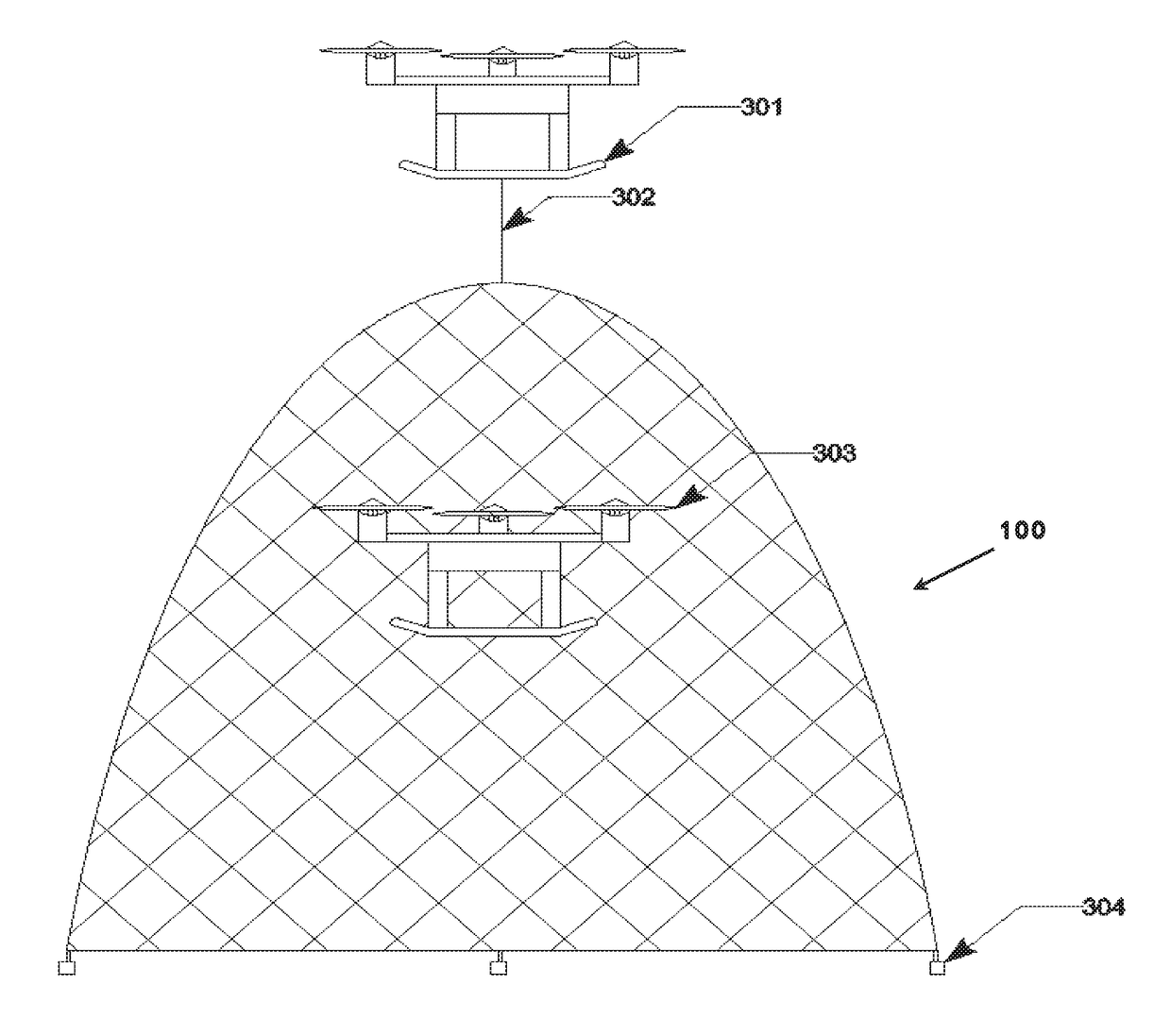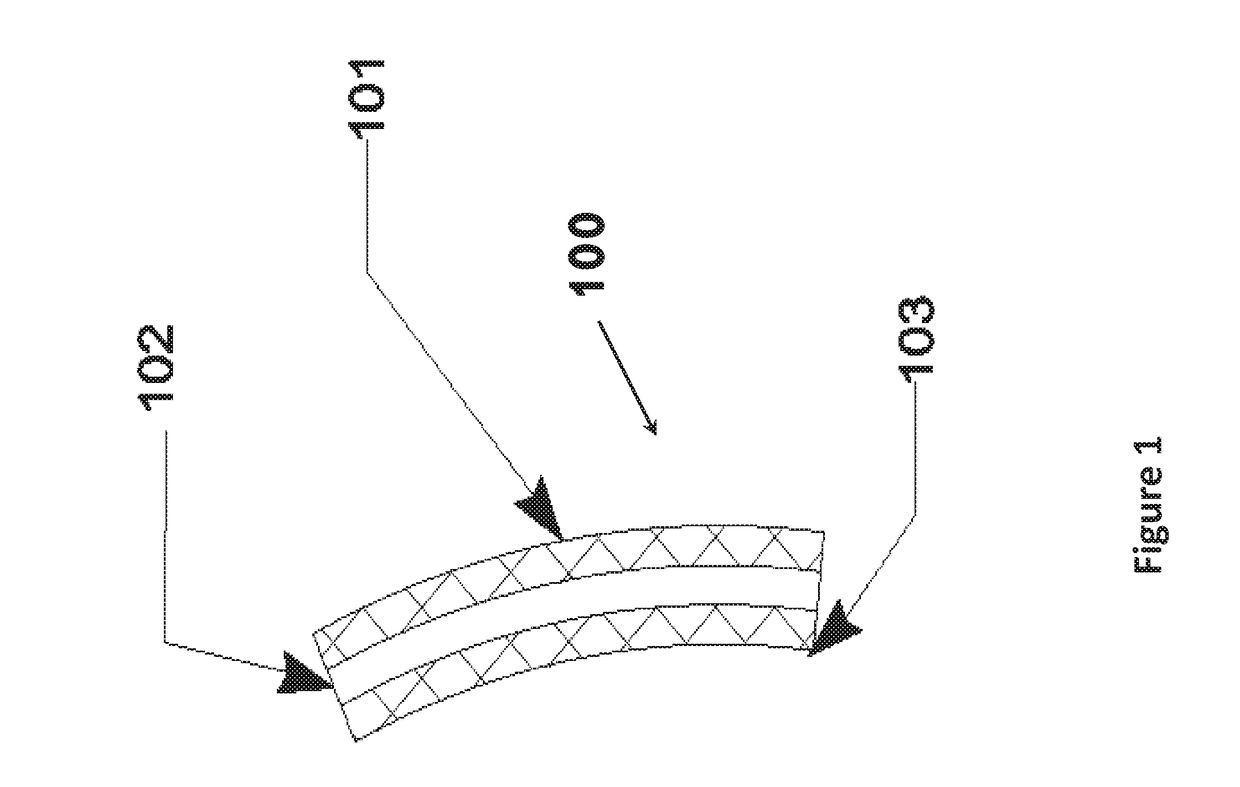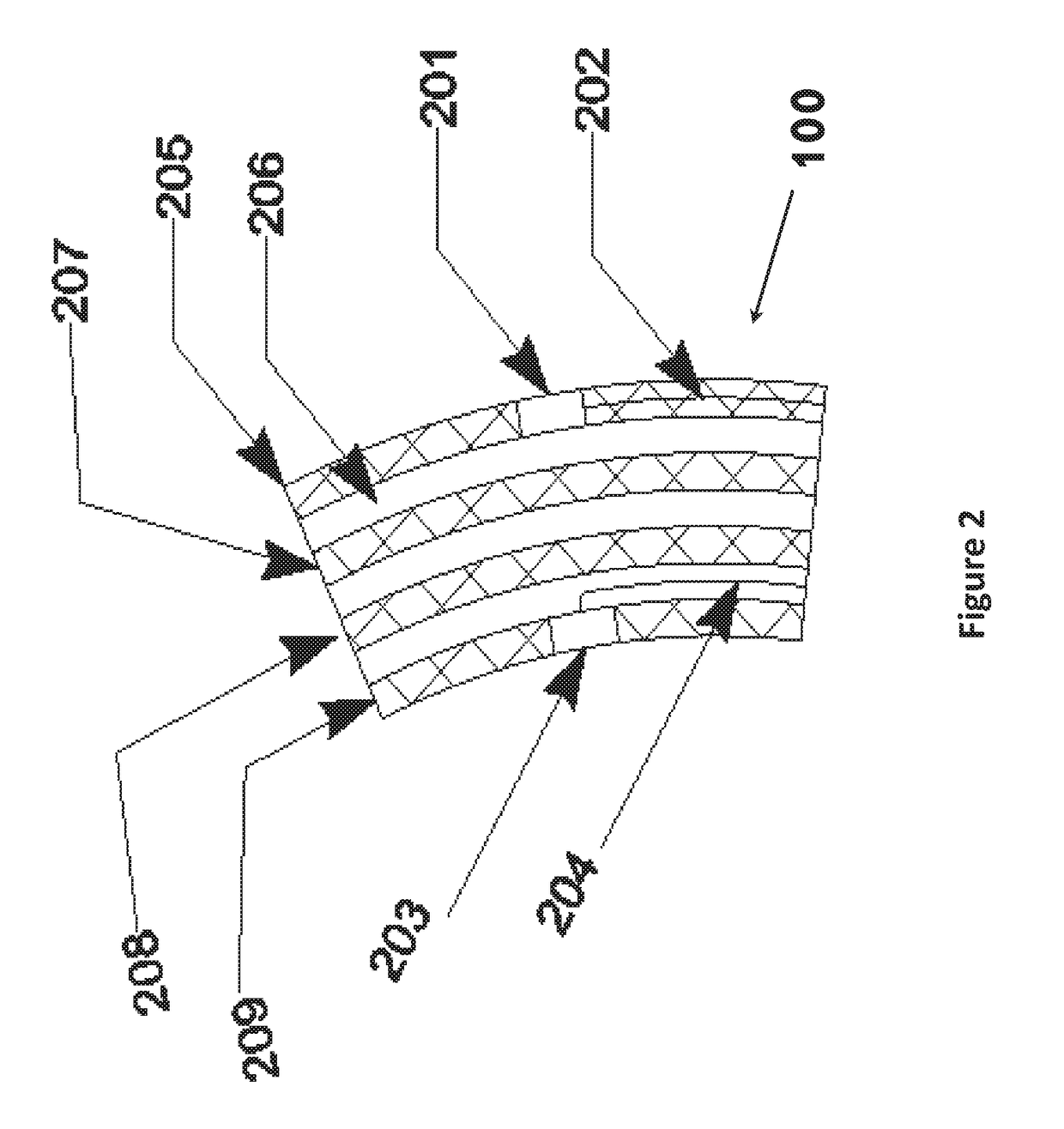System and method for arresting and neutralizing unmanned vehicles
a technology for unmanned vehicles and arresting systems, applied in special-purpose vessels, weapons, transportation and packaging, etc., can solve the problems of not offering all-encompassing solutions, the possibility of a larger collective threat, and the possibility of improvised threats never been higher
- Summary
- Abstract
- Description
- Claims
- Application Information
AI Technical Summary
Benefits of technology
Problems solved by technology
Method used
Image
Examples
Embodiment Construction
[0027]Referring to FIG. 1, a cross section of the construction of an exemplary embodiment of the RF Isolating Containment Unit (hereinafter RF ICU) 100 of the present invention is depicted. A layer of suitable conductive material 101 shields radio frequency signals from propagating in or out of the enclosed RF ICU 100. Additional layers of suitable supportive materials 102 that may have radio frequency absorptive properties and suitable conductive materials 103 may be added to increase the physical strength of the RF ICU 100 and increase the attenuation of radio frequency signals passing through it.
[0028]This embodiment of the present invention provides adequate radio frequency shielding and physical strength to achieve its two primary goals: capture a target unmanned aerial vehicle, and to drastically reduce the probability of reception of any outside radio frequency signals. Reducing the reception of outside radio frequency signals aids in the prevention of remote detonation of th...
PUM
 Login to View More
Login to View More Abstract
Description
Claims
Application Information
 Login to View More
Login to View More - R&D
- Intellectual Property
- Life Sciences
- Materials
- Tech Scout
- Unparalleled Data Quality
- Higher Quality Content
- 60% Fewer Hallucinations
Browse by: Latest US Patents, China's latest patents, Technical Efficacy Thesaurus, Application Domain, Technology Topic, Popular Technical Reports.
© 2025 PatSnap. All rights reserved.Legal|Privacy policy|Modern Slavery Act Transparency Statement|Sitemap|About US| Contact US: help@patsnap.com



